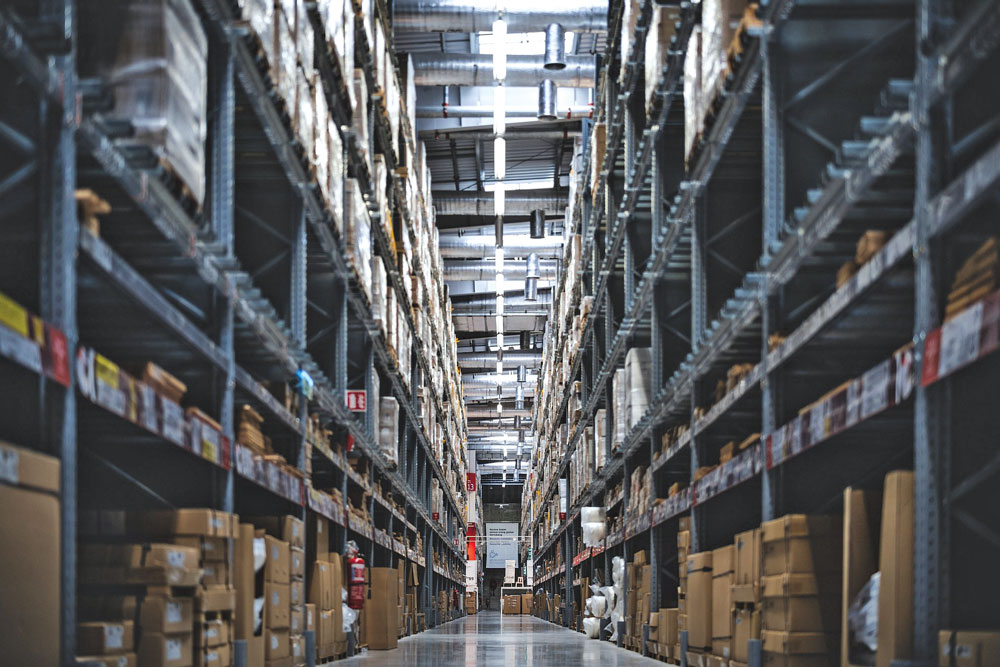Industrial & logistics sector leasing in 2023
CBRE South Asia Pvt. Ltd., India's leading real estate consulting firm, announced the findings of its report, '2023 India Market Outlook'. The report highlights key trends and projections for the Indian real estate sector this year. According to the report, a 'multipolar' supply chain strategy adopted by occupiers and the government's continued investment and infrastructure

CBRE South Asia Pvt. Ltd., India's leading real estate consulting firm, announced the findings of its report, '2023 India Market Outlook'. The report highlights key trends and projections for the Indian real estate sector this year.
According to the report, a 'multipolar' supply chain strategy adopted by occupiers and the government's continued investment and infrastructure initiatives are expected to sustain demand for Industrial &Logistics (I&L) spaces in 2023. The growth rate could slow as occupiers will align their portfolio strategies with global headwinds. This would result in absorption ranging 32-35 mn sq ft, 1-5% Y-o-Y growth in 2023. I&L supply forecast is expected to exceed 2022 levels and touch 24-26 mn sq ft in 2023. The share of project completions by prominent global/domestic developers is expected to increase to 40% in 2023-24 from 37% during 2021-22.
The demand is expected to be predominantly driven by 3PL and engineering & manufacturing occupiers. The report points to anticipated heightened interest from FMCG, retail and electronics & electrical firms. Moreover, the share of large-sized deals ranging from 32-35% is expected in 2023.
Anshuman Magazine, Chairman & CEO - India, South-East Asia, Middle East & Africa, CBRE, said, “We believe strong macroeconomic fundamentals and domestic consumption will overcome the impact of an impending slowdown. The government's strong capex programme, with a focus on infrastructure development and capacity building across sectors, is aimed at driving investment. As the second-largest employment generator in India, the real estate sector will continue to be a focus area for these investments.
The I&L sector occupiers are likely to move towards achieving operational efficiencies and rationalise cost in a multi-user facility, and this is expected to push the take-up of large-sized spaces hereon. Omnichannel retail, along with need for urban fulfilment centres would drive leasing by retail and FMCG firms”.
Ram Chandnani, Managing Director, Advisory & Transactions Services, CBRE India, said, “Supply additions are expected to be dominated by Mumbai, followed by Delhi-NCR, Bangalore, Chennai and Pune in 2023. These cities together are expected to drive more than 70% of completion during the year. Moreover, developers are likely to consider emerging logistics hubs by investing in land banks closer to new infrastructure initiatives and tier II & III cities.”
Top trends expected to shape the Indian I&L sector in 2023
More institutional investor backed supply to come onboard: The I&L supply is forecasted to exceed 2022 levels and rise to 24-26 million sq ft in 2023. The share of project completions by prominent global/domestic developers is expected to increase to 40% in 2023-24 from 37% during 2021-22.
- Vertical storage, safety standards of incoming supply to play critical role in occupiers decision making:The changing requirements of occupiers to enhance storage efficiencies of I&L spaces led developers to increase 'clear height' of developments in their upcoming parks. Moreover, standard specifications in the forthcoming I&L parks including sufficient loading/unloading bays, power back-ups, ridge ventilators, thermal insulations and fire sprinklers.
- Sustainability gaining traction in upcoming supply:ESG compliance is no longer an additional feature but a necessity, marking the competitiveness of a new project among potential tenants.
Further rental growth anticipated: Anticipate that occupiers would prioritize prime locations for expansion, but non-availability of ready-to-move-in supply would shift their focus towards secondary locations which would enable them to leverage comparatively lower rentals.
3PL and E&M continue to lead in leasing, while e-commerce is anticipated to recover: The share of 3PL players in overall leasing increased from 41% in 2021 to about 48% in 2022. Factors such as occupiers outsourcing their supply chain processes to achieve greater flexibility, increasing transportation costs and difficulties in sourcing labour have resulted in the growth in demand.
Occupiers continue to invest in tech to improve flexibility: Smart warehouse tech has seen rapid uptake in recent years, allowing occupiers to improve efficiencies, augment order handling capabilities and resolve labour shortages.
Things to watch out in 2023
The NLP and the 'grand plan' of the logistics division: The government's holistic approach to transform the logistics sector and bring it at par with global standards through a comprehensive logistics plan, supply side interventions (such as a unified policy framework, interconnected infrastructure, digital transformation and a skilled ecosystem) and a detailed policy on warehousing standards are expected to reduce the logistics cost to a single digit of the GDP. This would enable India to figure among the top 25 countries on the Logistics Performance Index by 2030.
Supply chain diversification to impact leasing activity: There would be a continued focus on 'just-in-case' buffer stocks to drive warehousing activity. Demand centers would see more robust leasing as several occupiers prefer to locate their warehouses closer to consumption hubs to reduce transportation costs.
Need for speedy deliveries to heighten in-city warehousing demand: Focus on faster deliveries and moving close to end-users have increased the need for smaller I&L spaces within the city. This trend is expected to fuel growth of multi-level warehouses in the suburbs of tier - I locations, which would help solve the Urban logistics (last mile logistics) puzzle.

Hits: 2







